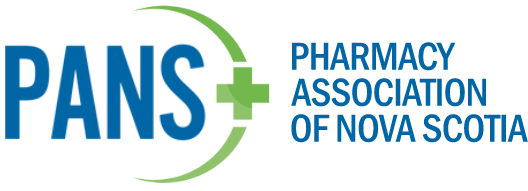What does it mean to dispense a medication?
Dispensing includes all of the steps necessary to translate a medication order (prescription) into an individualized medication supply that is both safe and appropriate. Below is a very brief description of what a typical visit to your local pharmacy may look like:
Step 1: The pharmacist will ask if you have visited this pharmacy before. If the answer is ‘No’, you will be asked to fill out a consent form. This allows the pharmacist to fill your prescription. If the answer is ‘Yes’, they will ask for an identifier (birthday or home address). This allows for an easy search within the pharmacy's computer system for your prescription records. You will then be asked if you have had this medication before, and what it is being used to treat. Many medications can be used for more than one medical condition. To ensure that a medications is appropriate for you, and that you will get benefit from it, your pharmacist has to understand why you are taking it.
Step 2: A member of the pharmacy team will enter the prescription into your profile, checking the: prescriber’s information, medication/dose, indications from the prescriber, and quantity of the script. The pharmacy system will check for possible interactions or other potential issues through the Nova Scotia Drug Information System.
Step 3: The medication bottle will be scanned and packaged with the Lot and Expiry. The medication is then counted for the designated quantity, labelled and handed off to the pharmacist to be checked.
Step 4: The pharmacist will perform a clinical check of your medication, which includes an assessment for drug interactions, allergies, as well as reviewing previous medications for the same use and ensuring it is the most appropriate drug, dose and duration for your condition. A pharmacist or pharmacy technician will perform a technical check on the accuracy of the information entered into the pharmacy software system, the label and the contents of the vial or package. They will also print off counselling documents to provide the patient with more information on the medication.
Step 5: The patient will pick up their medication and the pharmacist will provide counseling to the patient on the medication. If it is a refill, this may include an assessment regarding how well the medication is working for you, and whether you are experiencing any side effects.
A detailed description of the dispensing process can be viewed below:
- Input & Initial Check (Do we have all of the information we need?)
- Therapeutic Check (Is the prescription right for you?)
- Preparation
- Technical Check (Is the prescription filled accurately?)
- Supply and Educate
1. Input & Initial Check (Do we have all of the information we need?)
- Prescriber details
- Patient details (age, weight, medical conditions, allergies, etc.)
- Medical insurance coverage details
- Confirm medication/items to be dispensed
- Confirm indication
- Preference details (safety caps, etc)
- Prescription meets legal requirements (date, drug, strength, instructions, signature, etc)
2. Therapeutic Check (Is the prescription right for you?)
- Ensure dosage is both safe and appropriate based on age, weight, etc.
- Ensure the medication is compatible with current medical conditions and allergies
- Ensure the medication is compatible with other medications being taken
- Ensure the prescription is appropriate for the condition being treated
3. Preparation
- Select appropriate drug, brand, strength, form, quantity
- Repackage when necessary
- Prepare when necessary (reconstitute or compound from raw ingredients)
- Review expiry, instructions
- Apply cautionary labels
- Complete documentation and records
- Organize counselling aids (e.g. written materials)
4. Technical Check (Is the prescription filled accurately?)
- Ensure correct drug, brand, strength, form, quantity
- Ensure correct formula/methodology has been used for compounded products
- Confirm successful medical insurance processing
5. Supply and Educate
- Confirm patient identity
- Educate the patient/caregiver on the appropriate use of the medication
- Clarify any patient issues & questions
- Obtain patient/caregiver signature for supply when necessary
- Provide additional information and advice to patient on their condition
Never be afraid to ask your pharmacist a question. Your safety is your pharmacist’s number one concern.
